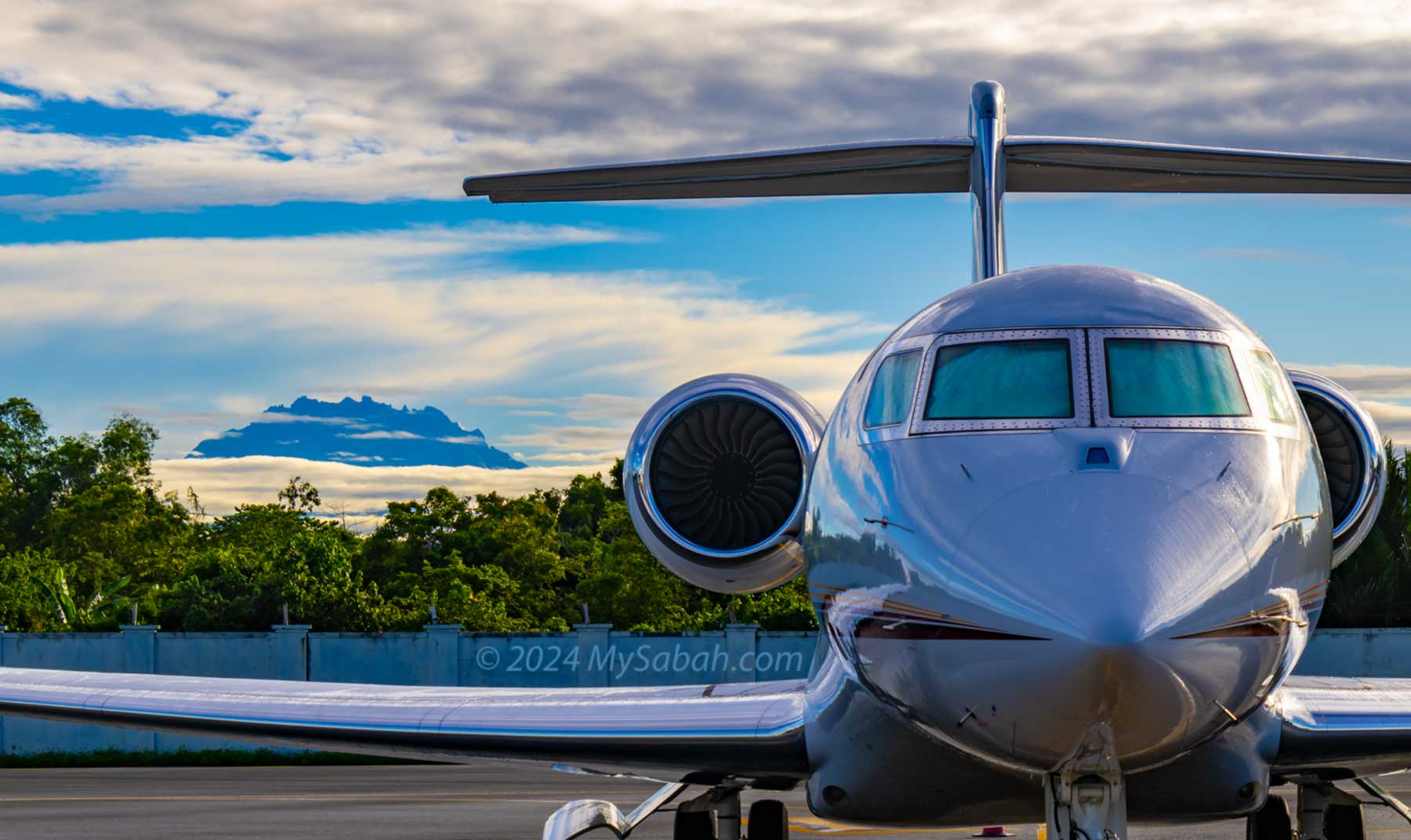Sabah, often referred to as the land below the wind, is a mesmerizing mountainous state in Malaysia. Its breathtaking landscapes are easily recognised from the planes soaring through the skies. Even on short flights from Kota Kinabalu City (KK) to destinations like Sandakan, Tawau, and Lahad Datu, which take less than an hour, the journey is an exhilarating experience from takeoff to landing, offering a plethora of sights to behold.
The side of the plane you select, whether right or left, determines your in-flight views. Below are the routes starting from Kota Kinabalu City (KK), so consider this guide when choosing your window seat. If you’re heading to KK, opt for the opposite side for optimal views.
Kota Kinabalu to Sandakan
The left-side view of the KK to Sandakan flight provides the closest vantage point to Mount Kinabalu, Malaysia’s highest mountain, and the town of Kundasang at its foothill during domestic flights.
As your plane approaches Sandakan city, the left side also affords a superior view of the Kinabatangan floodplains, recognized as the largest RAMSAR site in Malaysia—a wetland celebrated for its ecological and biodiversity significance. On the return journey from Sandakan to Kota Kinabalu, make sure to switch to the right side for the optimal view.
Kota Kinabalu to Tawau
Though the KK to Tawau flight is farther away from Mount Kinabalu, this route offers much more to see. Passengers seated on the left side will still catch a glimpse of Mount Kinabalu. Additionally, as the plane passes by Tawau Hills Park, fortunate passengers on the left side may witness the ancient volcanic mouth of Mount Maria amidst the dense Borneo rainforest.
For those frequent local travelers who might be accustomed to the sight of Mount Kinabalu, consider switching to the right side during the KK to Tawau flight. From this perspective, you might be treated to a view of Maliau Basin, also known as Sabah’s Lost World. This geological wonder resembles a vast meteorite crater when viewed from the sky. However, keep in mind that luck plays a role as Maliau Basin is often shrouded in clouds.
No matter which side you sit on, as the plane approaches Tawau, you’ll see vast expanses of oil palm plantations, with pockets of forests nestled within them.
Kota Kinabalu to Lahad Datu
The view from the flight from KK to Lahad Datu is not bad at all. On clear days, passengers on the left side are treated to the majestic sight of Mount Kinabalu in the background, with the picturesque paddy fields of Tambunan, often referred to as the Switzerland of the East, in the foreground.
However, if you find yourself seated on the right side, don’t be disappointed. You’ll have the privilege of gazing at the multi-peaked Mount Trus Madi, the second-highest mountain in Malaysia. Additionally, the right side offers a bird’s-eye view of Danum Valley, one of the oldest rainforests in the world.
To Kota Kinabalu City
Planes destined to land at Kota Kinabalu International Airport (KKIA) treat passengers to a scenic journey along the coastline of KK City. During this approach, travelers are afforded views of popular landmarks, including the islands of Tunku Abdul Rahman Marine Park, Sabah International Convention Centre (SICC), Jesselton Point, the bustling Waterfront, the iconic Sabah State Mosque, Sutera Harbour, and Tanjung Aru Beach.
For first-time visitors to Sabah, this aerial route along the coastline of KK city centre provides an excellent preview of the charm and vibrancy awaiting them in this captivating destination. It sets the tone for an exciting and memorable experience in Sabah.
Kota Kinabalu to Kuala Lumpur
For flights departing from Kota Kinabalu International Airport (KKIA) bound for destinations outside of Sabah (e.g. Kuala Lumpur), they often make a turn around Gaya Island. If you happen to be seated on the left side, you’ll have a higher chance of spotting the “Smiley Islands” formed by the arrangement of Manukan, Sulug, and Mamutik Islands.
General Tips
- Choose daytime flights for better lighting. There is no aurora borealis in Sabah so nothing for you to see in night flight.
- For photography enthusiasts, pay a little fee for a window seat located near the front or rear of the aircraft to minimize wing obstructions.
- Larger aircraft, such as the Boeing 737, offer better views compared to smaller ones like the turboprops commonly used by MASwings.
- The multi-layered windowpane will impact the quality of your photos, resulting in haziness, blurriness, or distorted colors. Using a professional camera to shoot in RAW format will help you a lot in the post-processing.
- Keep your expectation low. Just sit back, relax, and let the beauty of Sabah unfold beneath your wings.
Photos taken in Sabah, Malaysia Borneo
